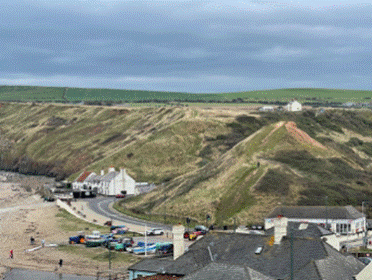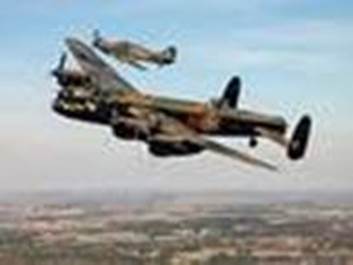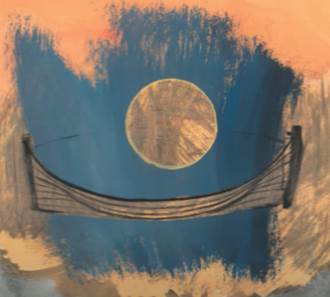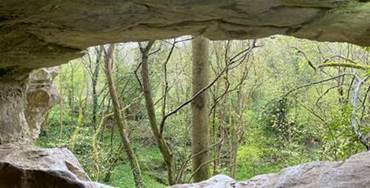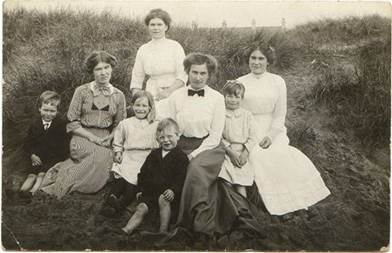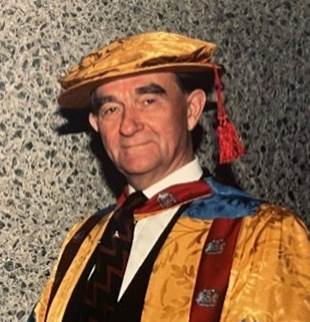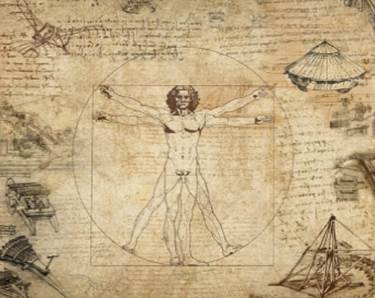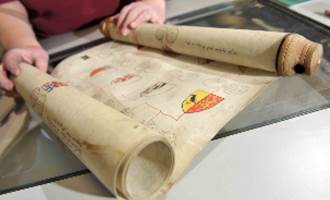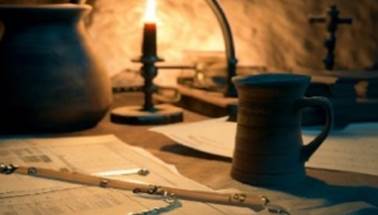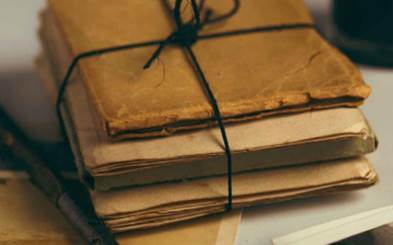The Farndale Story

|
Return to the Home Page of the
Farndale Family Website |
The story of one family’s journey
through two thousand years of British History |
The 84 family lines into which the
family is divided. Meet the whole family and how the wider family is related |
Members of the historical family
ordered by date of birth |
Links to other pages with historical
research and related material |
The story of the Bakers of
Highfields, the Chapmans, and other related families |
A Journey through time,
following in the footsteps of one family
When Nicholas
de Farndale started to clear the forested valley of Farndale in the early
thirteenth century, he brought the agricultural skills of his ancestors, who
were almost certainly the families of the relatively stable lands around
Kirkdale, a few miles to the south. As his ancestors worked on those lands for
a millennium through Roman, Anglo Saxon and Scandinavian influences, they
witnessed momentous events in the shaping of a national history, occurring in
the immediate vicinity of their home.
Nicholas’
descendants were often unruly, and many were outlawed and excommunicated for
poaching in the Royal Forest of Pickering. Those who took the Farndale name to
define themselves left Farndale and found new homes in the North York Moors and
across the Vale of York. A merchant family settled in York. Another family
settled in the heart of the Neville lands at Sheriff Hutton and fought with the
armies of Richard II, Henry IV and Henry V, before witnessing the Wars of the
Roses from the epicentre of influence. After the Black Death, William Farndale
became a chaplain in Doncaster, where he became the parish vicar by the end of
the fourteenth century. His descendants and the ancestors of the modern family
were focused at Campsall and Barnsdale forest by the end of the sixteenth
century, the place where the legends of Robin Hood were written, inspired by
ancestral outlaws of the forest.
In the mid
sixteenth century, the family moved north into the Bruce lands around Skelton
and the family became settled across Cleveland. The lovely rural village of
Kilton became the home for generations of the family, and others settled in the
bustling port of Whitby, from where Giles Farndale was press ganged to fight in
the Spanish Main, while John Farndale sailed in colliers on which James Cook,
explorer of new worlds, was mate. Another Whitby family were merchant mariners
who experienced many epic adventures at sea.
As the
industrial age hit Cleveland the family were drawn into new opportunities and
struggles and John Farndale wrote extensively about the transition into
scientific and industrial innovation. The family worked in the ironstone mines
and in new heavy industries, and moved to the dark satanic mills of the textile
industry in South Yorkshire. Experiencing the trials of new urban lives, John
William Farndale was the youngest member of the Jarrow March of 1936.
Two Joseph
Farndales each became influential Chief Constables of Birmingham and Bradford,
between them unearthing Fenian dynamite plots and inventing the police box.
Meantime the
family spread across a new empire to Australia, Ontario, Newfoundland, Alberta
and New Zealand, and took the family pioneering genes across the world.
The family
experienced the excitements and the horrors of wars. John George Farndale wrote
letters home from the heights of Sebastopol, through the Crimean War. Those
male members of the family born at the end of the nineteenth century were
nearly all destined for their places in the trenches of the First World War and
many served in the Second World War.
The Farndale
Story is a unique history of a single family and its path through two thousand
years of British History. It is also a shared story with countless other
ordinary folk who trod the path of British history. It is both the particular
story of one family, and an everyman story
of many.
The Time Traveller’s
Handbook
When you
first visit the Farndale Story, please read the Time Traveller’s Handbook
before using the Matrix for the first time.
Quick Key
I suggest
that you start by reading the Prologue, at the top of the matrix. The Numbered Stories in
thirty three Acts take you on the main journey into the past. You’re best to
read them in the numbered order, starting with the Prologue and then the first Act. However
more rebellious readers can travel through time in a more random order if that
is what you prefer.
The Explainers
tell of historical factors, events, and places which influenced our family’s
story. They provide a little more depth as you visit different eras of time.
The Thirty
Objects and Places take you on a geographical tour, and
provide directions if you have the chance to visit the lands where the Farndale
Story played out. You will come into contact with places and objects that will
put you in direct contact with the family through time. You might find the geographical guide helpful, which
will enable you to plan a route. The Farndale Folk are a few of
our ancestors waiting to be introduced to you, to further enhance your journey
through time. All these pages are full of hyperlinks.
These will take you to the underlying research if you would like to explore in
more depth, or check the source material. Every member of the Farndale family
has his or her own webpage. The hyperlinks will take you to individual family
members’ records; to family trees; to further information within the wider
website; and sometimes to links outside the website or source material.
A recent
technical innovation is a tool available through Google called Notebook LM. The tool uses artificial
intelligence to make complex information quickly accessible. One of its tools
is to turn complex research into very listenable podcasts. The AI is pretty
good, though does not always pick up the precise nuances, and it does not
replace the underlying research. Nevertheless, it provides a useful
introduction to each Act of the Farndale history. These podcasts are AI
generated from the research of this website. They are not external sources of
information. They provide quickly digestible summaries of each stage of this
research. Please don’t rely on the podcasts, which are intended to help with
the ways to access the underlying research, but use them as introductions
before you read the detail which is provided in the Farndale Story itself. The
real story is to be found in the written text through the various webpages of
the Farndale Family Website.
After
reading the Prologue, scroll down to
the early thirteenth century to find the first Act of the story.
The Time Traveller’s Matrix
|
The Guide to getting the best use of this matrix for future reference |
|
|
|
Prologue – Moors, Dales and Vales An overview guide and introduction to the three distinct landscapes which defined our history After
reading the Prologue, scroll down seven rows to Act 1 – The Cradle |
|
An alphabetical list of words and terms which you might come across during your travels, which are explained here |
A Journey through the ancestral lands Some preliminary orientation if you visit the area |
|
A story shared with countless other families who travelled the path of British history. |
|
|
|
|
A Time Machine to a different era of geological time in the heart of our ancestral home |
The start of the Victorian discovery of modern scientific method |
|
|
|
||
|
|
The
richest Mesolithic suite in Britain, a few miles south of Scarborough, on the
edge of the ancient Lake Pickering, only 30 km from Farndale |
Underground
caves, only 15 km from Farndale, which were the home of the Bronze Age Beaker
Folk |
A
massive Iron Age promontory Hill Fort only 20 km from Farndale |
The Iron Age, Bronze Age, Neolithic, and Mesolithic evidence of the people of the immediate vicinity to Farndale |
|
|
|||
|
Introduction
to Kirkdale and its Minster For those particularly interested in Kirkdale, this introductory page is the place to start |
|
Isurium Brigantum (Aldborough) The Roman Regional Capital of
the lands around Kirkdale |
A Roman Villa on palatial scale
just south of Kirkdale |
71 CE to 580 CE The lands which would become the lands of Kirkdale and Chirchebi in Roman and Pagan times |
A Roman Villa only 2km from
Kirkdale in the heart of our ancestral lands |
The Roman Capital of northern
England where Constantine was proclaimed Emperor |
A Roman arm purse which can be seen in the British Museum in London today, found in about the second century CE by a cairn overlooking Farndale, which will transport you back 2,000 years |
|
|
|
|
A place of wild beasts and men who lived like wild beasts Bede’s
description of the wilderness of Farndale as a place of dragons and wild
beasts The village and church of Lastingham, with its Norman crypt |
The founding of a Celtic
Christian monastery by Cedd, 2 km from the entrance to Farndale |
The momentous agreement at
Whitby, 30 km northeast of Farndale, which resolved incompatibilities between
Roman and Celtic Christian traditions, and placed Britain onto the European
stage |
560 CE to 793 CE Kirkdale and the Chirchebi Estate in the Anglo Saxon Period |
Kirkdale from its founding in
about 685 CE to the beginning of the Scandinavian period in about 800 CE |
Deirian and Northumbrian York, a political, cultural and
educational Hub on the European stage The people who dominated our
ancestral lands |
Alcuin and the
birth of modern education
The world of Ecgbert and
Aethelbert, successors to Bede, and their pupil Alcuin, who took York’s
powerhouse of knowledge to the court of Charlemagne to pioneer the European
educational system |
The burial ground of a Saxon
princess who lay for thirteenth centuries overlooking the Hill of Witches
where the Craggs line of Farndales would later make their home |
Ornate sarcophagus lids and Saxon artefacts to be found in Kirkdale Minster and embedded into its walls which will transport you to the Eighth century CE |
|
|
|
A reconstructed journey into Scandinavian Yorkshire and a glimpse of Scandinavian objects which tells its story |
The powerful figure at the heart of the aristocracy, who rebuilt Kirkdale and put our ancestral lands firmly onto the national political stage |
793 CE to 1066 Kirkdale and the Chirchebi Estate in the Scandinavian Period |
Anglo-Saxon-Scandinavian
Kirkdale Kirkdale in the
Anglo-Saxon-Scandinavian period from about 800 CE to 1066, with a brief
summary of its history through to 1500 |
The Scandinavian centre of
northern England |
A unique treasure whose secrets transport us into the world of the eleventh century upon which you can stare today, imagining direct ancestors who did the same a thousand years ago |
The poem which takes us into the Anglo-Saxon-Scandinavian mindset |
|
|
|
Regime Change |
The descendants of Nigel
D’Aubigny to whom our ancestors owed their allegiance in the twelfth century ‘Bending the knee’ |
The descendants of Robert de
Stuteville to whom our ancestors owed their allegiance in the eleventh and
then from the late twelfth century |
1066 to 1200 The People of the Kirkbymoorside (“Chirchebi”) Estate after the Norman Conquest |
This history of the Cistercian monastery of Rievaulx, in whose Chartulary the name Farndale was first recorded in 1154 |
The
breathtaking abbey ruins that must have been held in astonished awe by our
forebears when the abbey broke through the soil of Ryedale, adjacent to
Farndale, in only a couple of decades before it started to take control of
swathes of those lands |
The baronial Yorkshire family
from whom later Scottish Kings would derive and who dominated the early
history of our later Cleveland home |
The Royal Line and the Noble Houses The relationship between the Royal Dynasties of England and the Noble Houses who directly influenced our family history |
|
|
|
Rural lifestyles from the Norman Conquest |
A
journey to places in Farndale which featured in a 1301 tax register, marking
out the geography of the place our ancestors settled |
A look
down into Farndale to take in its scale and landscape, from the place where
the Roman Purse was dropped If you
have the energy, a hike to Middle Head, the Lord of the Rings land of Midelhovet,
where Edmund the Hermit once dwelled |
Thirteenth Century Farndale
Clearing the dale to build our new home After the Prologue, Start Here |
c1230 to c1310 Perhaps the earliest identifiable individual of the ancestral
story, who cleared and then settled in Farndale |
c1264 to c1335 The wealthiest tenant in Farndale in 1301 |
The story of the dale of Farndale to 1500, to accompany the family story |
A model which relies on extensive medieval evidence, to suggest the most probable family tree of the earliest ancestors of the Farndales |
|
|
|
|
|
The Great Yorkshire Forest Drive A drive
through Dalby Forest, the modern Pickering Forest, where our forebears took
game in contravention of forest laws, or were caught and punished by the
verderers and regarders of the forest A study of the nature of
poaching in Pickering Forest |
7 – Poachers of
Pickering Forest
Tales of a surprisingly large number of our forebears who were poachers in Pickering Forest. Their archery skills would foretell the legends of Robin Hood and the English army at Agincourt |
Richard and Thomas
of Farndale Two brothers who were excommunicated for poaching and contempt of
the authority of the church in 1316 |
c1265 to c1340 Roger slew a soar in Pickering Forest in 1293 |
c1266 to c1340 Robert was fined for poaching in Pickering Forest in 1293 and
1332 |
c1285 to c1360 William was the poacher of a hind and a calf in 1330 and repeat
offender in 1336 |
c1365 to c1450 John took poaching to a new scale when he was involved in a
significant cattle and horse rustling expedition in 1384 |
|
|
|
Danby at the turn of the fourteenth century |
c1265 to c1335 A relatively wealthy tenant who had left Farndale for Danby in
the North York Moors but adopted its name |
Our Pioneer ancestors who left Farndale but took its name to settle in new places |
c1273 to c1345 John left Farndale for Egton and Rosedale and was probably the ancestor of those who settled in York |
|
|
|
|
|
The street of the Medieval Butchers |
The Merchants of York A History of York after the Norman Conquest |
c1303 to c1372
A Saddler made freeman of York in 1363 |
c1334 to c1405 A freeman of York in 1397 through patrimony from his father |
c1352 to c1425
John Farndale, and his brothers Henry and William, were archers
and men at arms called to fight in Scotland in 1389 John was later a butcher made freeman of York in 1408 |
The
Church of St Helen and the Holy Cross and the Chapel of St Nicholas, the
heart of the Neville lands, and place of the alabaster effigy of the young
son of Richard III
This history of the family who
influenced the Wars of the Roses in whose seat our ancestors lived |
The
History of Sheriff Hutton to 1500
A history of Sheriff Hutton
which will take you to the lands of the Nevilles and Richard III during the
Wars of the Roses The dynastic struggles of the
Plantagenets, leading to the Wars of the Roses, the events of which our
ancestors were direct witnesses |
Tales
of archers and men at arms who fought with Richard II, Henry IV and Henry V
and an observation post in the home of the Nevilles and Richard III from
which to view the Wars of the Roses |
c 1357 to 20 December 1435
A veteran soldier of the armies of Richard II, Henry IV and Henry
V who fought in the French and Scottish Wars |
c 1332 to 1397 A chaplain, who
was pardoned for killing John of Spaldington and
later established his family in Sheriff Hutton, where he was a person of some
wealth |
|
|
St Mary Magdalene Church, Campsall
The
church in Barnsdale forest of which the literary character of the Middle
Ages, Robin Hood, wrote I made a chapel in Bernysdale,
That seemly is to se, It is of Mary Magdaleyne, And therto would I
be. Nearby sites associated with Robin Hood including Robin Hood’s Well at the side of the A1 |
Medieval Doncaster and its minster
The Victorian Parish church (later Minster) of Doncaster rebuilt in 1853, but on the site of the earlier Parish church of which William Farndale was chaplain and later vicar in the years after the Black Death |
1332 To 1400 Nicholas paid the 4d Poll Tax of 1379 which led to the Peasant’s
Revolt |
C1330 to c1415 The Chaplain and Vicar of Doncaster, who held lands at Loversall,
of whom we have significant records |
The Family of William Farndale, the Fourteenth Century Vicar of Doncaster |
The
History of Doncaster to 1500 The History of pre industrial
Doncaster from its Roman inception as Danum to the end of the
sixteenth century |
The history of a small village
and church just south of Doncaster, where William Farndale held land |
The history of the village of
Campsall north of Doncaster, where we find our ancestors in the sixteenth
century |
The legend of Robin Hood
explored for its Yorkshire roots, and the Farndale connection with the
legends, first as the class of poachers who gave rise to the inspiration, and
later their fifteenth century descendants who lived in the place where the
stories emerged |
|
|
|
|
The most likely paternal and maternal ancestors of modern
Farndales, who died in Kirkleatham having probably emigrated with their
family into Cleveland |
12 –
Arrival in the old Bruce lands around Skelton Castle The Sixteenth and Seventeenth Families of Kirkleatham, Skelton, Moorsholm and Liverton in Cleveland |
William and
Margaret (nee Atkinson) Farndale The couple who married at St Mary Magdalene Church in Campsall
north of Doncaster, and who emigrated to Cleveland and were buried in
Skelton. |
A history of Kirkleatham and Wilton, the place where our family first settled in Cleveland |
A history of Skelton and its old church. The Farndales arrived in Moorsholm in the Parish of Skelton in about 1588 and lived there through the tumultuous years of the Civil War |
|
|
|
1838 to 1914
Charles took over the farming of Kilton Hall Farm where he farmed
577 acres 1876 to 1970 George was the last of the Kilton Farmers |
1760 to 1846 William was a farmer of Kilton and a merchant of wood, rods,
coals, salting bacon. 1798 to 1885 Martin was a farmer at Kilton Hall Farm of 600 acres |
Three
generations of Kilton Farndales in one place. A side
trip to nearby Boosbeck and Skelton take you to the gravestones two later
generations. Take in Wensley and you’ll find two more recent generations. Seven
generations of the family in one short drive |
1724 to 1807 Old Farndale of Kilton, the patriarch of
the Kilton Farndales, regaler of smuggler tales, alum merchant and farmer, of
whom the Squire once said “When you are gone, there will never be such
another Johnny Farndale” |
The First Hub The story of the Kilton Farndales, a family who dominated a village, since lost to time, over two centuries |
The story of the lost village
of Kilton and its sylvan landscape A
journey around modern Kilton, of farms, a ruined castle and a small village of
Kilton Thorpe to capture the essence of the two century home of Farndales |
Stories of smugglers, led by
my great x3 grandfather known as the King of the Smugglers, and the undoubted
involvement of our forebears |
1757 to 1835 The Smuggler Chief The grandfather of Martin Farndale’s wife Elizabeth Taylor, no doubt in league with the c17th Farndales. When the local folk whispered Andrew’s Cow has calved, everyone knew the goods had arrived. The wealthy John Andrew later became master of the Cleveland Hunt |
Have
fish and chips in the Ship Inn, and you will be in the home of John Andrew’s
smuggling trade, once connected by an underground passage to the white house
on the hill where my great x3 grandfather lived |
14 – Spreading out from Brotton and Loftus The Second Hub The story of a substantial division of the family who spread widely across Cleveland and beyond from Kilton, Brotton and Loftus |
|
1713 to 1742
Press ganged into the Royal Navy, Giles served on HMS
Experiment in the Spanish Main during the War of Jenkins Ear where he
died and was buried at sea |
1709 to 1790
John Farndale served alongside James Cook, discoverer of the
Southern Continent, on colliers out of Whitby |
1728 to 1779
The association of James Cook with
Cleveland, Whitby, Great Ayton, the
Farndale ancestral lands, and individuals of the Farndale Story |
A history of Whitby at the
height of its maritime power in the eighteenth and nineteenth century, home
to several large Farndale families. A look back to the Anglo Saxon
history of Whitby in the time of Celtic and Roman Christianity |
The Third Hub The story of the Whitby Farndales who settled in the bustling port of the eighteenth and nineteenth centuries |
The place of Dracula inspiration where many Farndales have been buried, provides a vantage point over Whitby, and its maritime activity |
1802 to 1837
The story of the merchant master mariners, John Christopher Farndale Senior and his sons William and John and their epic maritime adventures around the English coast, to the Baltic, Russia and Scandinavia and to Biscay, the site of a tragic disaster |
The
home from the early eighteenth century of a large section of our family |
16 –
Return to the Vale of York The Fourth Hub The Ampleforth Farndales who returned south of the North York Moors to Yearsley near Ampleforth |
|
|
The education of our forebears The life of children in
seventeenth century to Victorian Yorkshire |
How agricultural practices
changed over time |
Our family history includes
experiences of high infant mortality in Victorian times, often extreme
poverty, and struggle The evolution of medical care |
A story of aspiration and
achievement |
17 – Transition to the Industrial Revolution John Farndale, my great x2 uncle, was a prolific writer who captured the essence of the late eighteenth century and its transition into the Industrial Revolution. The family’s history provides a direct pathway to experience these years of momentous change |
1791 to 1878
The Author A man of sphinxian complexity who wrote
extensively and has passed down stories of the family and of change in early
Victorian Yorkshire |
Saltburn
by the Sea, Victorian new town John Farndale focused much of
his writing on the new seaside town of Saltburn by the Sea, built beside the
Old Saltburn of smuggling repute. It was a place of Victorian optimism and
inspiration, driven by the arrival of the railways and the richness of Cleveland’s
ironstone deposits |
The alum trade in Cleveland Opportunities for work as
servants in households |
Huntcliff, Saltburn by the Sea Find a
vantage point on the towering Hunt Cliffs to look down over Saltburn and Cat
Nab, and the alum mines. It was here, John tells us, that when a French
Napoleonic ship threatened out to sea, a band of local women dressed in red
along the cliffs to make the French believe that an army of redcoats was
ready to welcome any attack |
|
|
The engine of Cleveland’s
Victorian development was its mineral supply, particularly its ironstone.
Individuals in the Farndale Story worked in an extensive network of mines
throughout the area |
The family story of mining, mainly for ironstone, the primary resource behind the industrial development of Cleveland |
The ruined site of the Kilton mine |
|
The many families who lived in Leeds, Bradford, Coatham, Middlesbrough, Hartlepool and Stockton through the period of industrial transition |
|
|
The story of the folk who left Yorkshire and travelled to London and elsewhere in the south of Britain |
|
|
|
|
|
1864 to 1954
The Chief Constable of Bradford who pioneered the use of fingerprints, invented the police box, and played a key role in Bradford’s evolution at the start of the twentieth century |
1842 to 1901
The Chief Victorian Constable of Birmingham who foiled a Jack the Ripper Hoax and played a key role in uncovering the Ledsam Dynamite Conspiracy |
To
contrast with the medieval outlaw poachers of Pickering Forest, the story of
the law makers including two influential Chief Constables and the real
Inspector Foyle
|
1899 to 1964 An inspector of crime during the Second World War The real Inspector Foyle |
|
|
|
|
|
The story of the multiple generations of Farndales who made Great Ayton their home |
1795 to 1877 The father of a large Great Ayton family, who was a cartwright |
A visit to Great Ayton where many members of the family lived, and a side trip to the James Cook Monument |
1793 to 1884
Matthew and Hannah Farndale and their daughters Mary and
Elizabeth embarked on a 14 week voyage to Melbourne to establish a new
lineage in Australia |
The story of Matthew Farndale and his two daughters who emigrated to Melbourne during the Australian Gold Rush and settled at Birregurra, who have left a wealth of descendants, though none still bearing the Farndale name. The story of another Australian family of the 1960s |
Upon his return from the Crimean War, John George Farndale took his family to Ontario in 1870. At about the same time Samuel Kirk Farndale took his family to Ontario |
The pioneering spirit that
dominated the family’s story from the mid nineteenth century |
|
||
|
|
The story of the Scottish Lindsays, Catherine Lindsay’s family |
The parents of a family of twelve born on a moorland farm, who soon spread across Britain and North America |
25 – The Farndales of
Tidkinhow
The story of the Farndales of Tidkinhow and the adventures of twelve siblings who lived in a house that wasn’t big enough for them all |
The
moorland farm where a family of twelve grew up |
The story of Matthew Farndale
and his family of Craggs Hall Farm |
The story of John Farndale and his family who moved to Loftus |
|
||
|
|
1886 to 1966
The grocer who emigrated to Newfoundland |
In 1910 John Martin and Bessie Farndale emigrated to Newfoundland and established a grocery business in St John’s. His son joined the Artillery in World War 2 and lived to be the oldest Farndale |
|
The Story of the Baker Family
of Highfields A portal into another family, the ancestors of Peggy Baker, who married Alfred Farndale |
and Peggy Baker
The World War 1 veteran, Alfred Farndale married the
independently minded Peggy Baker in 1929 and embarked immediately for the
Prairie of Alberta. Defeated by the Great Depression the family returned to
Yorkshire where they built a new life from the 1930s |
Atlantic
crossings at the time of Titanic
The story of five brothers and
two sisters who crossed the Atlantic in the age of Titanic to emigrate
to Canada |
The story of the Farndales of Tidkinhow who left Yorkshire for a new life on the Prairies |
||
|
|
1885 to 1967
A pioneer who played an important role in the construction of the
Hoover Dam in Nevada and later became a US Senator |
The story of the Hoover Dam, with which Jim Farndale was associated |
The family of Jim Farndale, US Senator, who settled in Nevada and California. The descendants of George William Farndale who settled in Illinois and Wisconsin. The family of John Alan Farndale, of California |
The New Zealand pioneers, descendants of Ronald Martin Farndale of Masterton, and of Wilf Farndale, of Gisborne |
1919 to 1974
Captured at the Battle of Sidi Rezegh in North Africa, Ronald emigrated to New Zealand where his descendants still live |
1911 to 1985
An aircraft engineer in Bristol, Wilf emigrated to New Zealand |
|
||
|
30 - Newcastle and
South Shields The many members of the family who settled in South Shields and Jarrow |
John William
Farndale (“Newcastle Johnny”) 1919 to 1986
The Youngest Jarrow Marcher in 1936 |
The story of the Jarrow March
of 1936, of which Johnny Farndale, was the youngest member |
William Farndale was a railway porter who became a presbyterian missionary and his son, William became President of the Methodist Conference in 1947, leading a ‘back to the soil’ campaign |
Exploring the role of religions of various denominations and the evolution of intellectual ideas on the Farndale Story |
Rev Dr William
Edward Farndale 1881 to 1966
The influential Primitive Methodist who became head of the
Methodist Church and Moderator of the Free Church Council shortly after the
Second World War |
|
|
|
|
|
The Crimean War through the
perspective of John Farndale, who took part in the long campaign |
The story of the many soldiers from the family who took up arms
in the First World War
The context of the First World
War to the Farndale Story |
The Second World
War soldiers, sailors and airmen
The story of the Farndales who took up arms in the Second World
War
The context of the Second
World War |
32 – The
Soldiers, Sailors and Airmen
An exploration of the many military members of the family, and their stories |
1836 to 1909
A Victorian infantryman who provided us with an eye witness
account of the Crimean War before taking his family to a new life in Ontario |
1912 to 1944
An airman shot down over Denmark after a bombing raid, and
secretly buried by the Danish resistance
The story of the shooting down of Lancaster ME 718 |
General Sir Martin
Farndale KCB 1929 to 2000
The original author of this genealogy who led the British Army
and Northern Command of NATO in the crucial years of the Cold War |
An explosive blend of Farndale firepower |
|
|
|
|
|
|
1876 to 1932
Brewer and Northumberland Hussar of Rothbury, Northumberland |
A final chapter which explores the twentieth century family and reflects on how the family has spread its wings in the more recent years of the twenty first century |
1854 to 1930
The Bank Manager of Thirsk |
1910 to 1965
Wilfred was brought up in the community of Sir Titus Salt’s
Saltaire Mills. He was an accomplished Cricketer who played with some
Yorkshire greats and a social influencer in his work as a Sanitary Officer |
A Comic Actor who joined the Yorkshire Mummers |
|
|
|
|
The family history is remarkably complete. We explore here where it has been necessary to rely on the most probable narrative where certainty has been impossible |
Epilogue - inspiration from our back story What we can take from our journey through two thousand years of history Finish Here |
Perspective Laying our
Ancestors Back in the sun
The genealogist’s ambition |
Perspective
Peering through chambers to
our ghostly beginnings |
|
|
|||
|
|
Telling the story of
Our Female Ancestors
The historical record is not properly representative of our female ancestors. As a historian it is important to found our narrative on the evidence which exists. However by reflecting on the existing evidence, and applying a fresh analysis, we can recover the story of the Farndale women, even though the underlying evidence has not recorded everything they did |
The Story of the Farndale Story
Building the story over two generations |
Some reflections on new
approaches to genealogy and historical research to allow families to come
into contact with their deep ancestral history |
Some notes on the sources and
methods used to compile and bring alive the lineage of a family A reflection of the importance
of records of births, deaths and marriages, and census records, but some
ideas about how to build on that framework to create stories and pathways
through regional and national history |
A recognition of some
restrictions to genealogical research before 1500, but some ideas to help
overcome the constraints |
Some thoughts on the
relationship between genealogical methods with historical research, to
uncover the full picture |
Meet the whole family. The 84 Family
Lines of the Farndale Family A matrix of the 84 family lines which make up the extended family will introduce you to every individual member of this family who can trace their origins to Anglo-Saxon-Scandinavian England. |
The original index of our family, in alphabetical order by date of birth, which will enable you to find an individual person if you know when they were born |
|
|
|
|
|
|
|
|
|
|
|
|
Return to the Farndale Family Website

























































